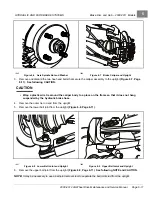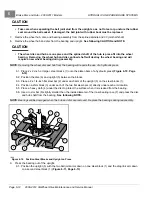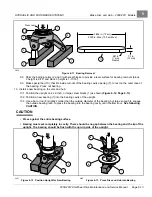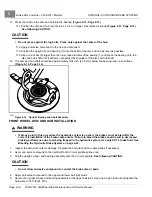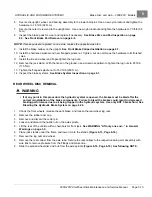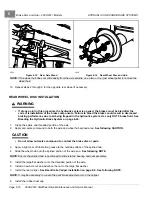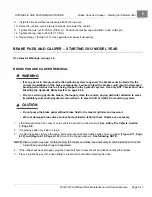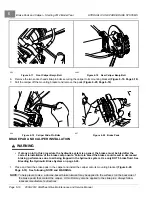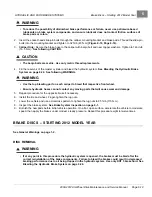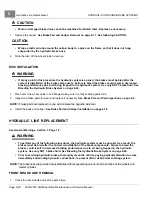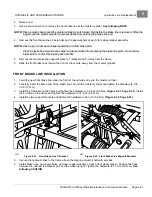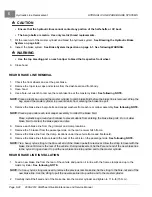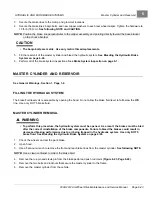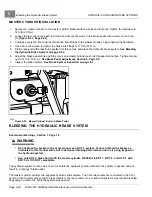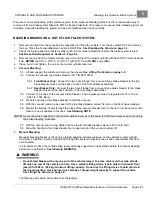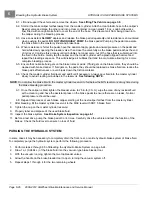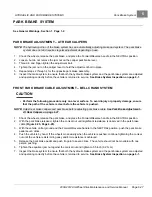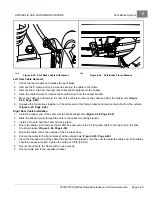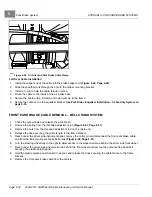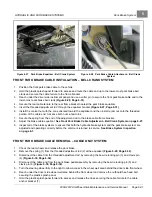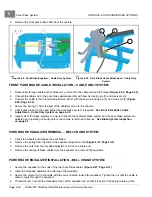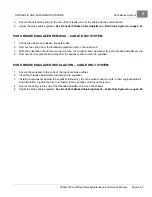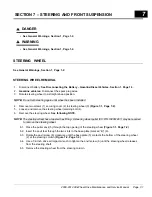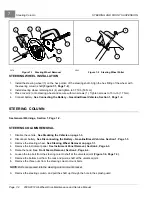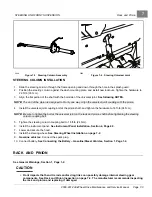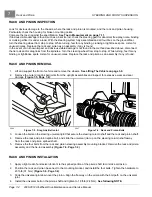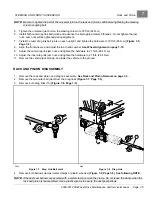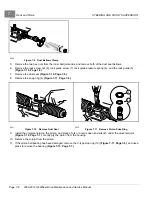
HYDRAULIC AND PARK BRAKE SYSTEMS
Bleeding the Hydraulic Brake System
6
Pressure or vacuum bleeding, with preference given to the pressure bleeding method, is the recommended way to
remove air from a brake system filled with DOT 5 silicone brake fluid. If a pressure or vacuum brake bleeding tool is not
available, manually bleeding the system can be accomplished when done carefully.
BLEEDING BRAKES ON A DOT 5 FLUID FILLED SYSTEM
1.
Remove all cargo from the cargo bed in preparation for lifting the vehicle. Turn the key switch OFF and remove
the key. Place the Forward/Reverse handle in NEUTRAL.
See Disabling the Vehicle on page 1-3.
2.
Check the brake pedal and master cylinder push rod for proper adjustment before the brake system is bled.
See Brake Pedal Adjustment, Section 5, Page 5-5.
3.
Remove the cap from the master cylinder reservoir and top off the master cylinder with fresh DOT 5 silicone brake
fluid.
NEVER
mix DOT 3, DOT 4, or DOT 5.1 with DOT 5 as it
IS NOT
compatible.
4.
Place, but do not tighten, the cap on the master cylinder reservoir.
5.
Vacuum Bleeding:
5.1. Lift and support the vehicle and remove the wheels.
See Lifting The Vehicle on page 3-9.
5.2. Connect the vacuum-type brake bleeder (CC P/N S0010702).
5.2.1.
Front Brakes Only:
Connect the two hose fittings from a vacuum type brake bleeder to the top
brake bleeder valves on the back of each of the front caliper assemblies.
5.2.2.
Rear Brakes Only:
Connect the two hose fittings from a vacuum type brake bleeder to the brake
bleeder valves on the back of each of the rear caliper assemblies.
5.3. Connect an air hose to the vacuum brake bleeder. The air pressure must be regulated at 12 to 15 psi
(0.827 to 1.034 Bars).
5.4. Press the handle on the brake bleeder to start the vacuum.
5.5. With the vacuum running, open each of the top brake bleeder valves 1/4 turn on the front wheel calipers.
5.6. Monitor the fluid as it flows through the tubes of the vacuum bleeder tool. Continue to run the vacuum until
there are no air bubbles in the lines.
See following NOTE.
NOTE:
Do not allow the brake fluid in the master cylinder reservoir to fall below the MIN level mark at any time during
the brake bleeding procedure.
5.7. With the vacuum still running, tighten the two top front brake bleeder valves to 25 in-lb (3 N·m).
5.8. Allow the handle on the brake bleeder tool to open and turn the vacuum system off.
6.
Manual Bleeding:
Manually bleeding brakes is not done by rapidly applying extreme pressure on the vehicle’s master cylinder.
It’s simply a function of gently moving fluid through the system to displace the air and contaminants that have
accumulated.
It is important to have the vehicle sitting level and safely supported on jack stands before the manual bleeding
procedure is performed.
See following WARNING.
WARNING
• Do not bleed brakes with only one end of the vehicle raised. To place vehicle on four jack stands,
lift only one end of the vehicle at a time. Use a suitable lifting device (chain hoist or hydraulic floor
jack) with 1000 lb. (454 kg) minimum lifting capacity. Do not use the lifting device to hold vehicle in
the raised position. Use approved jack stands of proper weight capacity to support the vehicle.
See Lifting The Vehicle on page 3-9.
The following procedure will enable correct bleeding:
2008-2012 All-Wheel Drive Maintenance and Service Manual
Page 6-25
Summary of Contents for Carryall 295 SE
Page 2: ......
Page 20: ......
Page 28: ......
Page 58: ......
Page 66: ......
Page 100: ......
Page 122: ......
Page 150: ......
Page 157: ......
Page 190: ......
Page 197: ......
Page 236: ......
Page 284: ......
Page 386: ......
Page 394: ......
Page 442: ......
Page 452: ......
Page 454: ......
Page 455: ......
Page 456: ......

